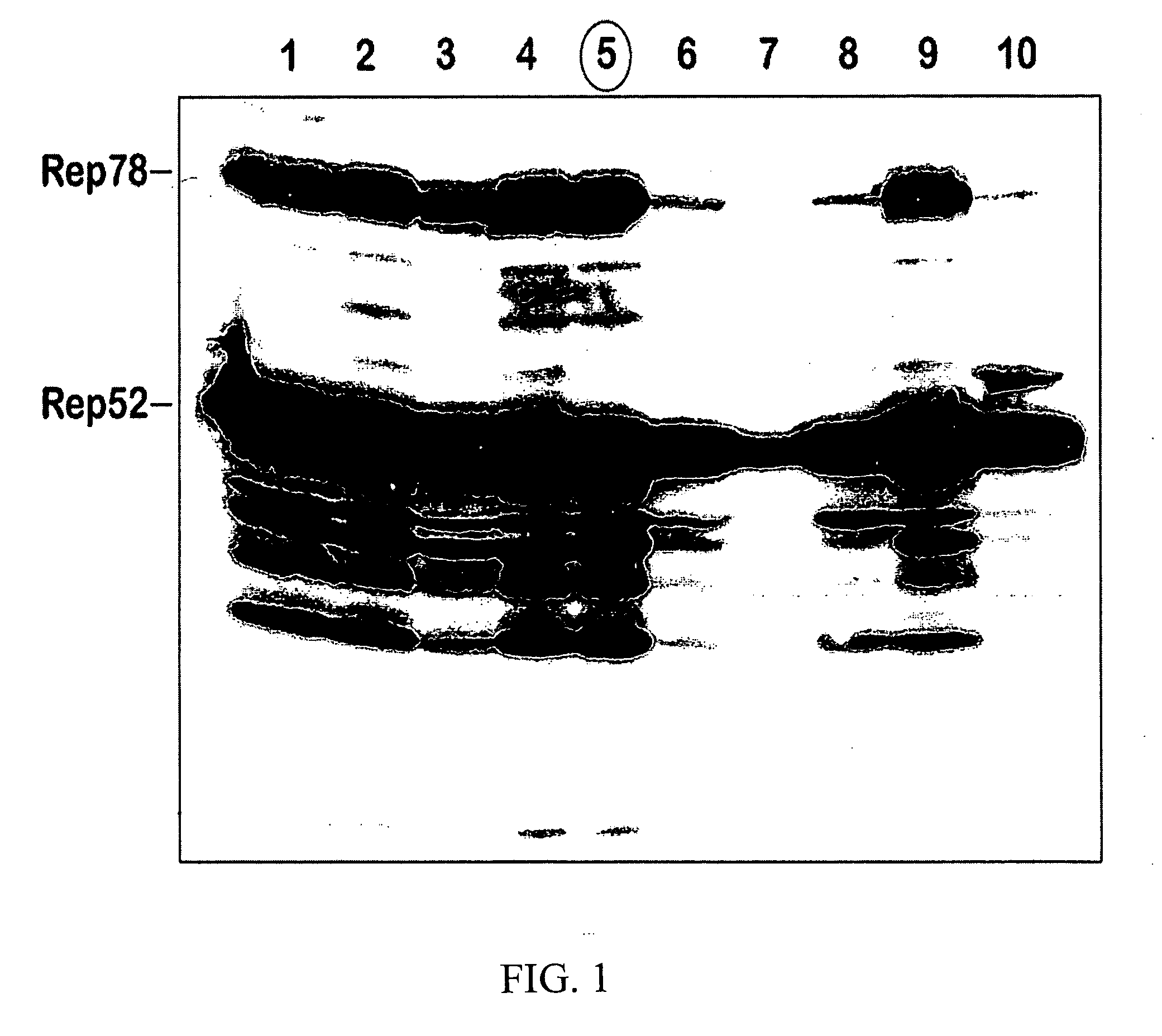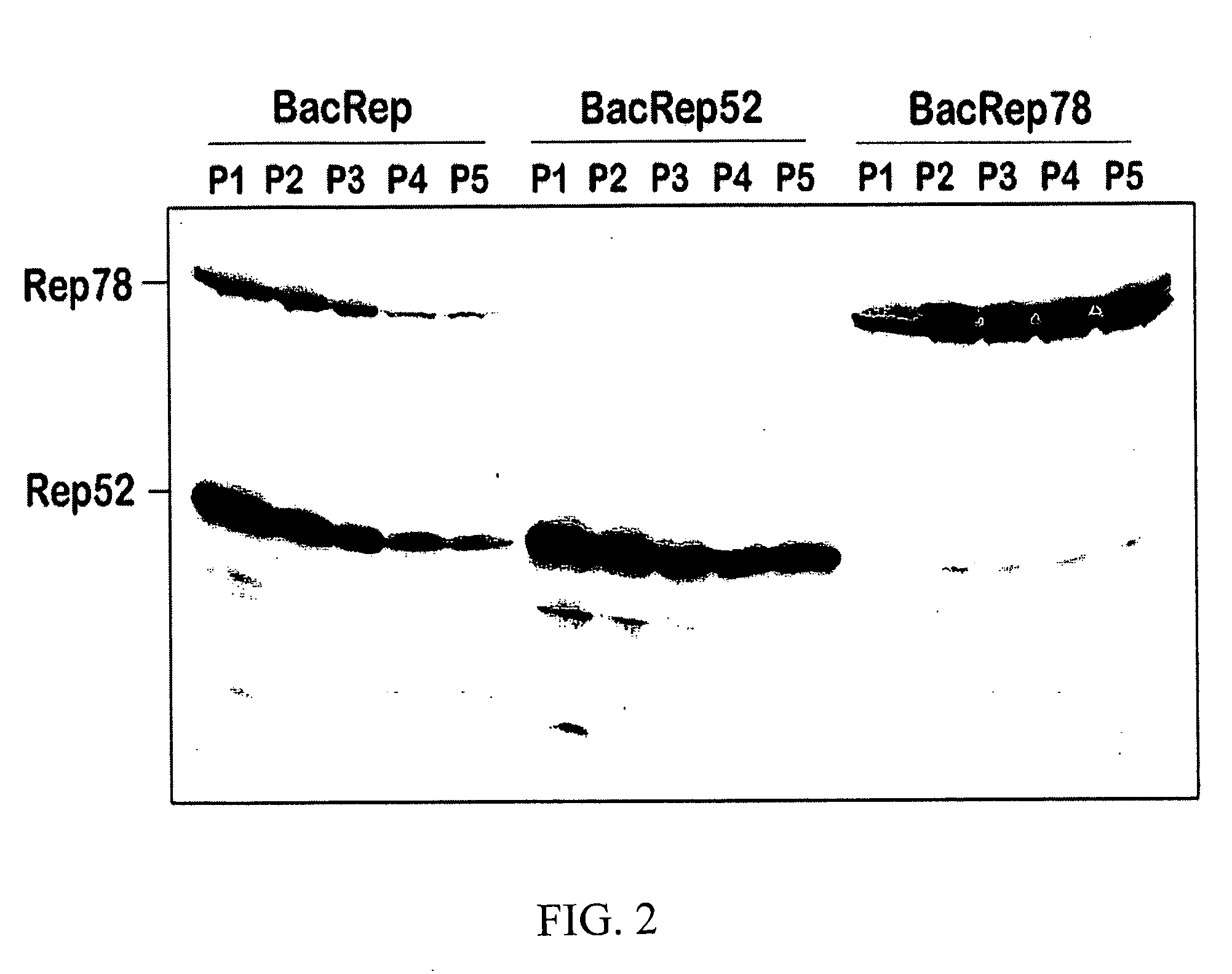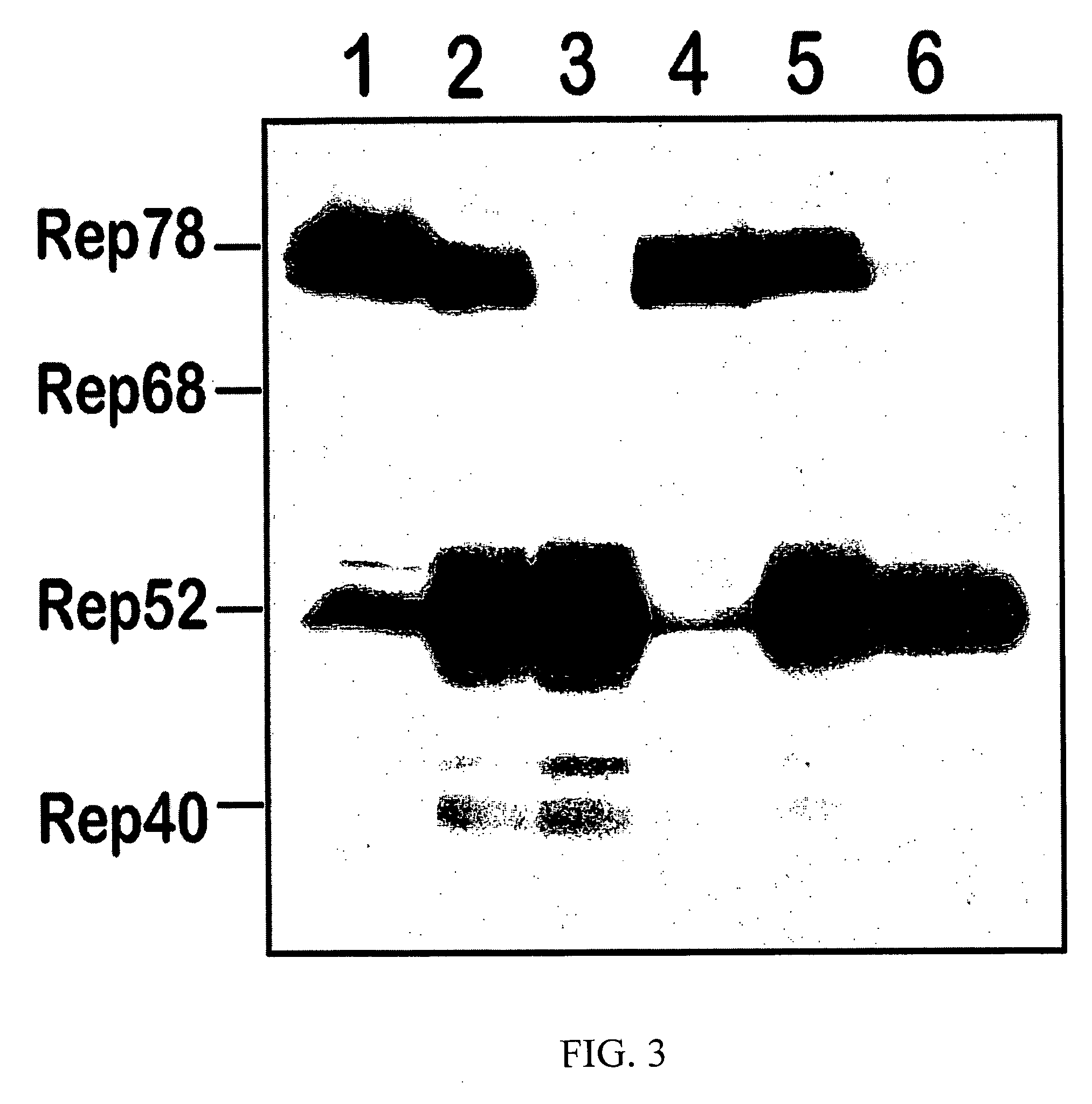Modified baculovirus expression system for production of pseudotyped rAAV vector
a technology of raav and baculovirus, which is applied in the direction of viruses/bacteriophages, dsdna viruses, genetic material ingredients, etc., can solve the problems of instability, limited application of recently developed baculovirus-based production protocol, and instability, so as to reduce the loss of rep protein, reduce the loss of raav vector, and improve the effect of bacterial expression
- Summary
- Abstract
- Description
- Claims
- Application Information
AI Technical Summary
Benefits of technology
Problems solved by technology
Method used
Image
Examples
example 1
[0086] In order to provide comparison with other systems designed to increase rAAV production in competent host cells, the recombinant Baculoviruses reported by Urabe, et al., 2002, Hum Gene Ther 13:1935-43 were constructed.
[0087] Difficulties in scaling up rAAV production hinder the advancement of clinical protocols for gene therapy. Therefore, improvement in production methods, especially related to scale up, fulfills a need in the field. A recently developed baculovirus-based production protocol (Urabe, et al., 2002, Hum Gene Ther 13:1935-43), although potentially promising, was employed but produced only marginal titers. In addition, rAAV serotype 5 and 8 vectors, packaged using the baculovirus system disclosed in the reference, were non-infectious. The following procedures were used to investigate the cause of the baculovirus system instability and loss of Rep protein on sequential passaging.
[0088] pDG contains AAV rep and cap genes and E2A, E40RF6 and VA genes. According to ...
example 2
[0092] Stability of helper components. Upon re-plaquing the original BacRep stock, only 6 out of 10 individual plaque isolates expressed both Rep52 and Rep78, which was indicative of the inherent instability of the Rep helper construct. By splitting the palindromic orientation of the rep genes and designing two separate helpers expressing Rep52 and Rep78, the passaging stability of the vector was increased to P5. The re-designed set of vectors employed with a quadruple co-infection of Sf9 cells to produce rAAV appeared to provide improved results.
[0093] In a pilot experiment, side-by-side yields of rAAV prepared using three vs. four helpers (P2 each) at an MOI of 5 each were compared. There was little difference in rAAV titers produced (1.9×109 infectious particles / ml-vs. 1.4×109 infectious particles / ml).
[0094] In a separate experiment, whether or not an increased MOI of BacRep infection with a P3 stock would compensate for the partial loss of Rep-expressing baculovirus particles ...
example 3
[0097] rAAV “pseudotyping”. The utility of the disclosed production system depends largely on the flexibility of its components to package (“pseudotype”) a particular rAAV cassette into other AAV serotype capsids. Vectors of other serotypes can achieve a higher transduction of a targeted tissue resulting in a reduced therapeutic vector dose.
[0098] Initially, attempts to design BacVP-AAV5 and BacVP-AAV8 helper vectors by emulating the BacVP-AAV2 capsid helper were unsuccessful. Both rAAV serotype 5 and 8 (FIG. 7A) contained very little of VP1 known to harbor a phospholipase A2 domain that is critical for virus trafficking inside the cell. To alleviate the deficiency, the vector was redesigned by swapping the respective VP1up domains between AAV2 and AAV8 helpers. The resulting chimeric rAAV2 / 8 partially reconstituted the levels of VP1 protein and, as a result, increased PLA2 activity in vitro and infectivity in vivo.
PUM
| Property | Measurement | Unit |
|---|---|---|
| Flexibility | aaaaa | aaaaa |
| Nucleic acid sequence | aaaaa | aaaaa |
| Stability | aaaaa | aaaaa |
Abstract
Description
Claims
Application Information
 Login to View More
Login to View More - R&D
- Intellectual Property
- Life Sciences
- Materials
- Tech Scout
- Unparalleled Data Quality
- Higher Quality Content
- 60% Fewer Hallucinations
Browse by: Latest US Patents, China's latest patents, Technical Efficacy Thesaurus, Application Domain, Technology Topic, Popular Technical Reports.
© 2025 PatSnap. All rights reserved.Legal|Privacy policy|Modern Slavery Act Transparency Statement|Sitemap|About US| Contact US: help@patsnap.com



